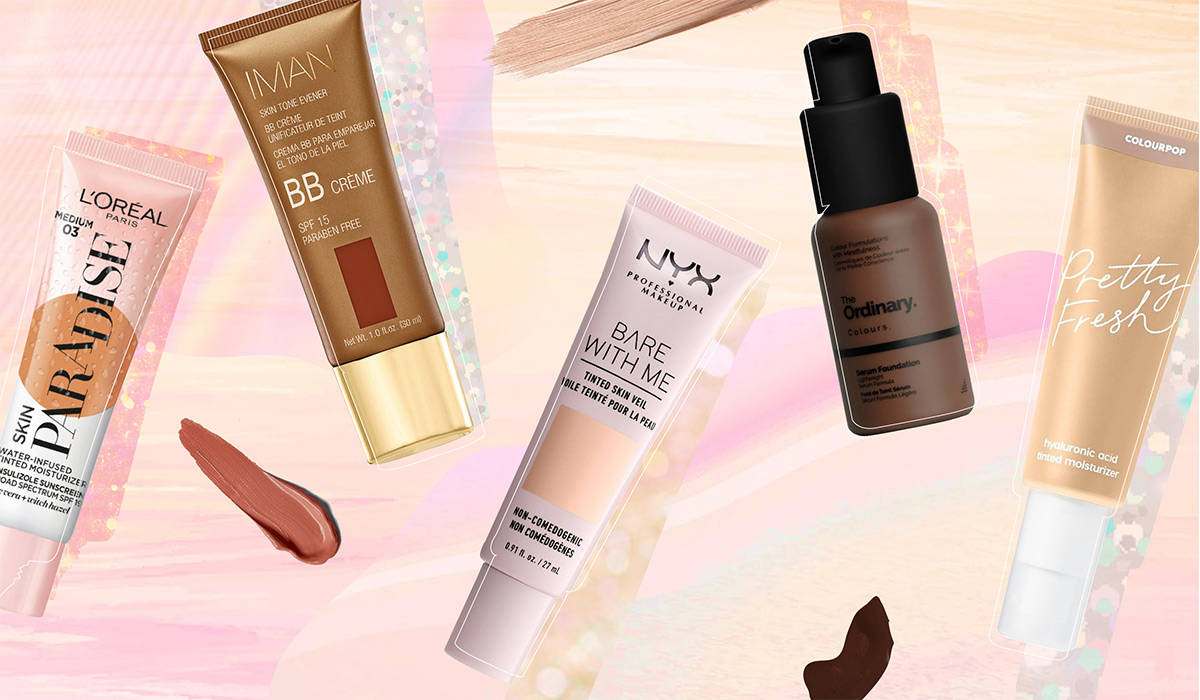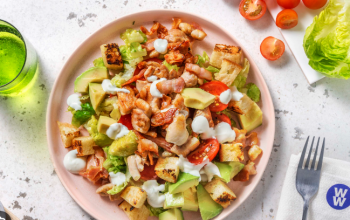There is a glut of beauty products on the market right now – we all know that. Whether it’s hair products (shampoos, dry shampoos, bar shampoos ……) , body products (body lotions, body oils, body serums ……) , or skin care products (physical exfoliators, chemical exfoliators, hybrid exfoliators), there are many options – but makeup seems to be the easiest category to distinguish.
Or is it?
Obviously, it’s easy to distinguish between foundation and mascara, but some types of products are more difficult to identify. Take skin tints and tinted moisturizers, for example. Both of these skin tone products give our faces that “your skin looks better” effect, and they are often used interchangeably. However, they are two completely different things.
If you’re browsing the beauty supply aisle trying to understand the difference, we’ve asked a top celebrity makeup artist to break down everything you need to know.
What Is Tinted Moisturizer?
A tinted moisturizer is exactly what it sounds like – a moisturizer with color.” They provide sheer to medium coverage and even out skin tone while hydrating and moisturizing the skin,” says Jason Hoffman, vice president of artistry and education at Amyris.
Hoffman further explains that in order for a product to be considered a tinted moisturizer, it must moisturize the skin to meet FDA and Federal Revenue Service guidelines. A good example of this is the Meghan Markle-approved Laura Mercier Tinted Moisturizer SPF 30.
“Tinted moisturizers come in a variety of formulations and are best used depending on your skin type: if you have oily skin, I recommend an oil-free tinted moisturizer; if you have acne-prone skin, I recommend a non-comedogenic tinted moisturizer; if you have dry skin, I recommend a tinted moisturizer that contains moisturizing ingredients such as hyaluronic acid, ceramides or squalane,” Hoffman says.” You can also find tinted moisturizers with a variety of finishes, including radiant, natural and matte. Many tinted moisturizers also have an SPF, which is great for everyday use, especially in the summer.”
What Is Skin Tint?
Think of skin tinters as purer versions of tinted moisturizers. However, they tend to have a texture more akin to a serum than a moisturizer, provide less coverage and are not as moisturizing to the skin.
“They are usually less greasy than tinted moisturizers,” Hoffman adds, “and are perfect for achieving a no-makeup look.” Skin dyes sometimes have ingredients that benefit the skin, such as hyaluronic acid, squalane, niacinamide, or more. All skin types can use skin dyes, but if you are prone to acne, make sure the product is non-comedogenic.”
One of his favorite products is Rose Inc’s Skin Enhance Luminous Tinted Serum because it’s non-comedogenic and bridges the gap between powerful skincare and luminous makeup, providing sheer, glowing coverage.” He said, “The pigment spheres are suspended in a skincare matrix infused with hyaluronic acid to visibly plump and smooth fine lines, squalane to provide weightless moisture and peptides to help protect the skin from environmental damage.

What’s the Best Way to Use a Tinted Moisturizer?
These products are especially good if you have a dry skin type or want to maintain your skin’s moisture level without covering it up completely.
Hoffman says you can apply it with your fingers, a makeup brush or a makeup sponge-it’s entirely up to your preference.” If you’re looking for more coverage, you can apply a layer of concealer over the top. Then, you can finish your makeup routine with bronzer, blush, mascara or whatever else you use,” he adds.
What’s the Best Way to Use a Skin Tint?
“Skin dyes are great for a no-makeup look, providing just a hint of coverage and making you feel like you’re not wearing anything on your face,” Hoffman says.
As with tinted moisturizer, he says, apply it with your fingers, a makeup brush or makeup sponge-just be sure to apply moisturizer underneath it so your skin gets an extra skin-care boost. If you want more coverage, use a concealer for a topical treatment.
How to Choose Between Tinted Moisturizer and Skin Tint:
According to Hoffman, it depends on your skin type and the type of results you want.” If you have acne-prone skin, choose a product that does not produce acne. If you’re currently experiencing breakouts and want more coverage, choose a tinted moisturizer over a skin tint. If you have dry skin, look for a tinted moisturizer or skin tint that contains moisturizing ingredients such as hyaluronic acid and squalane. If you have oily skin, look for an oil-free tinted moisturizer or skin tint,” he suggests.



